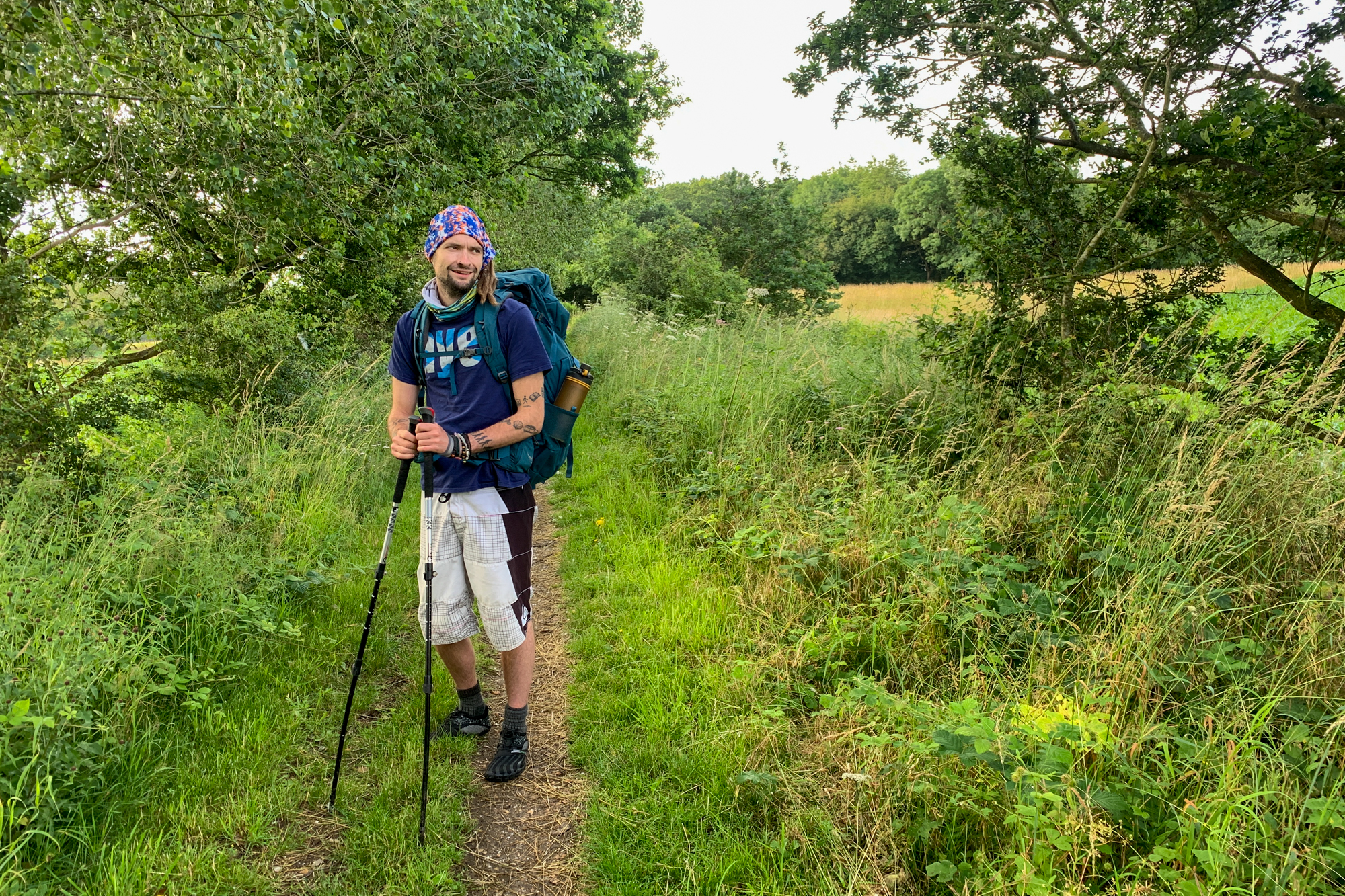Hydration is one of the most important considerations for walkers. So, how much water should you bring on a hike? The quick (and unhelpful) answer is, it depends. The more useful (and approximate) answer is one litre for every two hours of hiking.
I’ve hiked all over the world, from the dusty Meseta Central on the Camino de Santiago to the Andean Mountains in Peru. The amount of water that you need to take hiking will depend on a range of factors, including the environment, water sources en route and how long the trail is.
Packing enough water for hiking is a delicate balancing act and getting it wrong will not only take all the fun out of your adventure but in some environments, potentially pose a mortal threat to your health. So, remember the number one rule! Not enough H2O? Don’t go!
Read more: (opens in new tab)
- Hiking Lunch Ideas For All Dietary Requirements
- The Best Hiking Snacks for the Trail
- A Guide to Peeing Outside
Water for Hiking: A Guide to Staying Hydrated on the Trail
How Much Water to Bring Hiking: Considerations
When it comes to packing enough water for your hiking trip, there are a number of considerations. While the recommendation of one litre for every two hours of hiking is a great estimation to start with, this will fluctuate depending on a number of factors.
Environment
The first of these is the environment through which you are hiking. For example, is it hot or cold? Remote or well-trafficked? All of these things will have an impact on how much water you should bring on your hike.
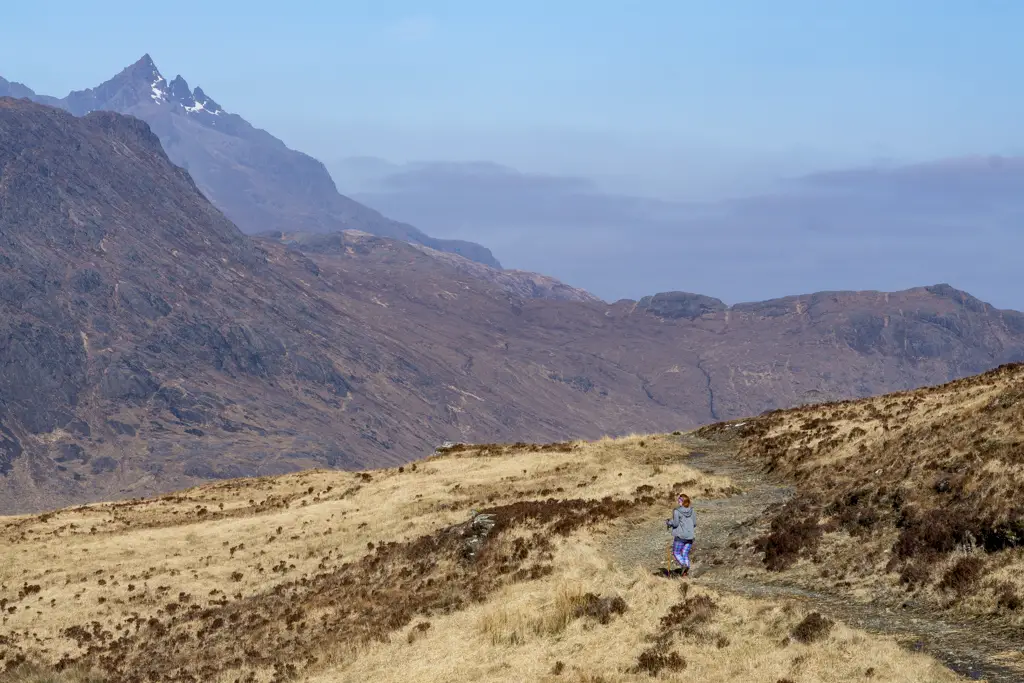
In hot environments, you will dehydrate more quickly, meaning that you should drink more water. However, if the trail you’re on passes water sources, you may be able to stock up on drinking water en route. This is good news as it means you won’t need to carry the same weight as hikers travelling through really remote terrains.
Food
Every good outdoor adventure should be accompanied by copious amounts of food. No matter whether you have prepared a packed lunch or are armed with only snacks, the type of food that you are eating on the trail will impact how much you need to drink.
For example, salty snacks like dried corn or peanuts are great for keeping you energised on a hike. However, food with a high salt content will dehydrate you meaning you’ll need to up your water intake.
There are advantages to eating salty snacks on the trail, however. These foods replenish the electrolytes you lose through sweating, something water alone cannot do. Electrolytes help you stay energised, avoid muscle cramps and promote a healthy gut. If you’re not a fan of salty food, it’s worth knowing that you can also get electrolyte drinks or powders to add to water.
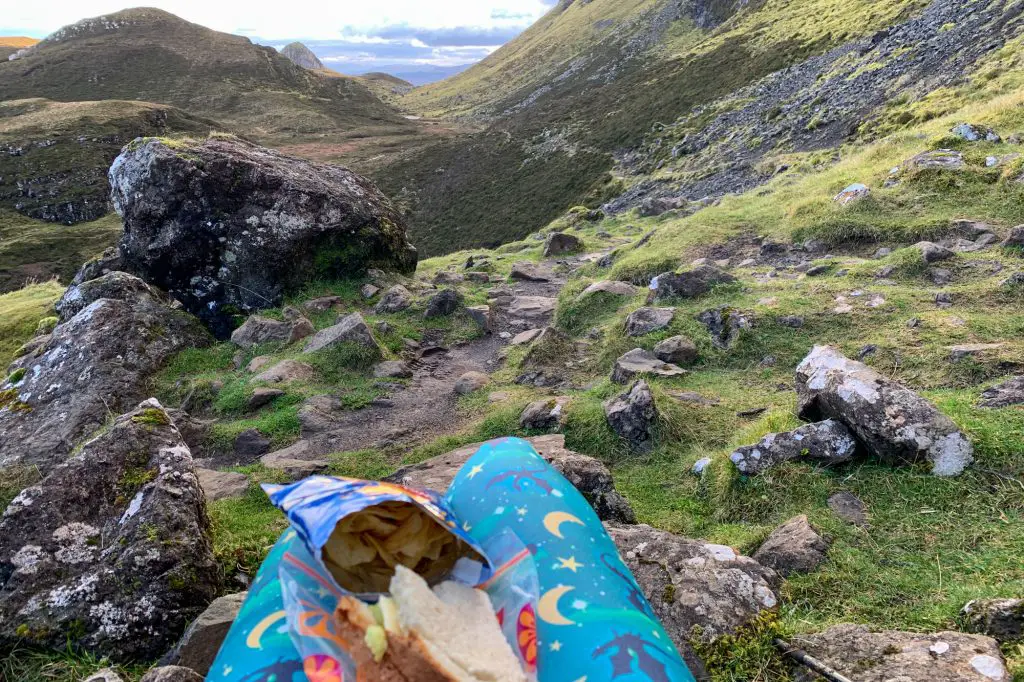
Gear
Deciding how much water to bring on a hike can be a difficult thing to do, especially if you are not familiar with the trail. Even the most experienced hikers get it wrong from time to time!
To save yourself from any sticky situations, it is best to carry some sort of water filter with you when you’re trekking. These filters allow you to fill up from water sources on the trail, removing nasty bacteria and viruses from your drinking water. Having a water filter with you means that you don’t need to carry an entire day’s worth of water and you can simply restock from water sources as and when you come across them.
Hydration bladders are something that many hikers swear by. They give you easy and quick access to drinking water on the trail, which makes it easier to avoid dehydration. However, water bladders can hold more liquid than many hikers will need, especially those on day hikes. While it is always better to carry too much water rather than too little, you should avoid overfilling your hydration bladder. The extra weight on your back will take its toll over long distances.
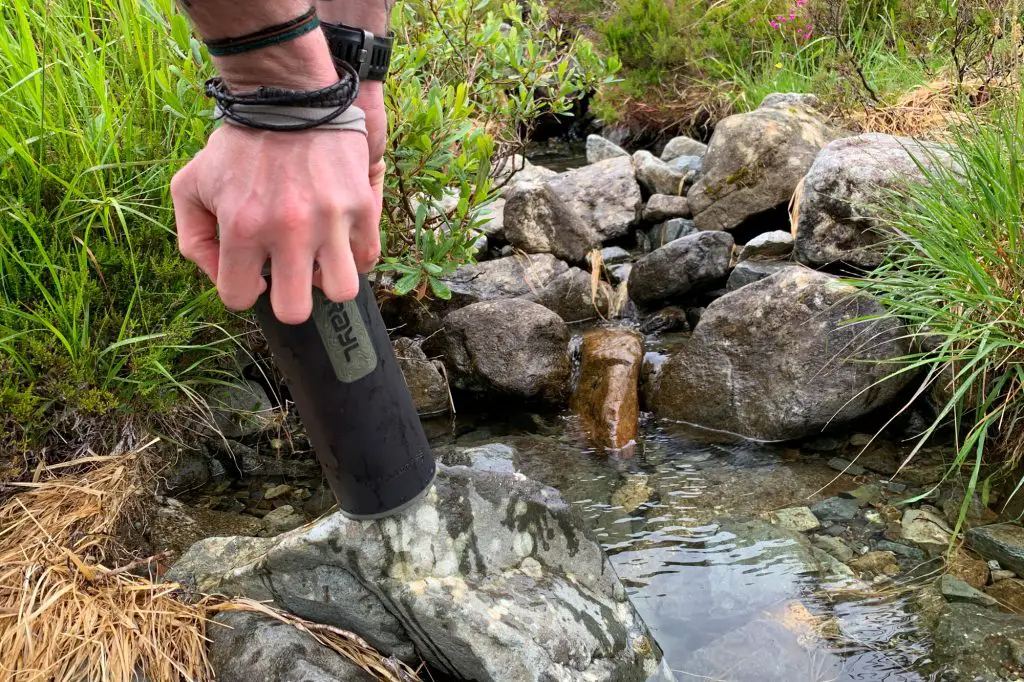
Physical Exertion
Not all trails are created equal and they all demand a different amount of physical exertion. For example, hikers setting off on a largely flat and meandering trail will not sweat as much as those scaling a mountain. How difficult your hike is will impact how much water you should be carrying.
Personal Sweat Rate
Now, this could be a little TMI but I am a sweaty person. And on the trail, I sweat even more. This means that I need to drink a lot of water to stay hydrated. Everybody’s personal hydration threshold is different and those who sweat less may well need to drink less water.
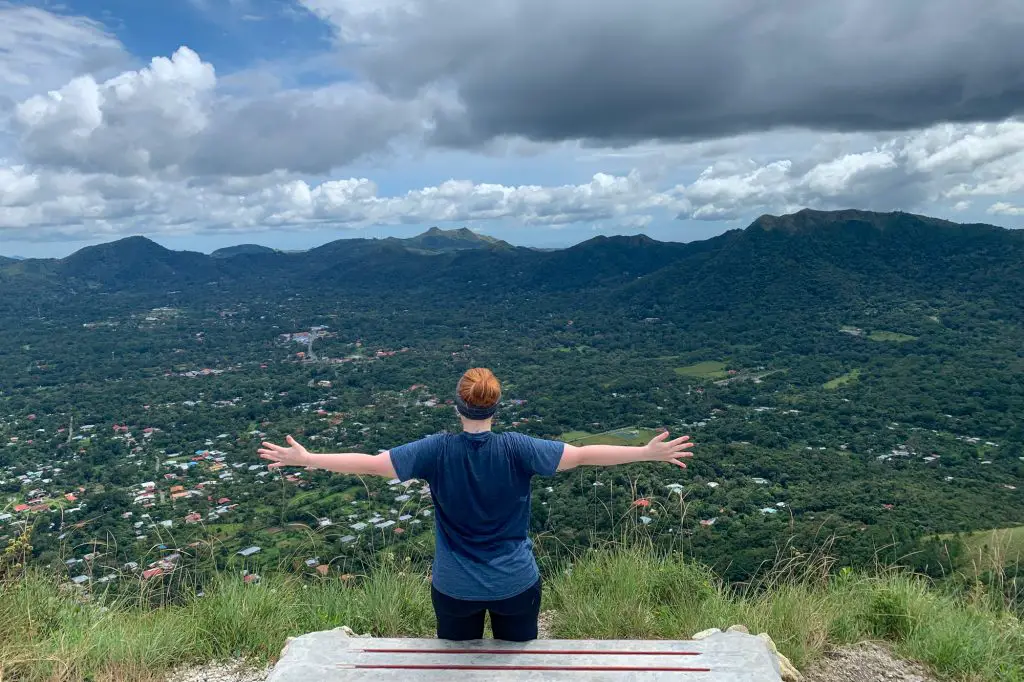
Don’t let society tell you that being a sweaty person is bad! The huge plus of your constant perspiring means that you’re far less likely to be diving on the trail for an outdoor pee every five minutes!
11 Tips to Stay Hydrated When Hiking
1. Hydrate Before You Set Off
Don’t leave all of your drinking to the trail. To keep yourself properly hydrated, you should make sure that you drink at least a litre the morning before you set off for your hike. Having a healthy start point for the day will put you on the right track early on and make maintaining a good level of hydration easier throughout the hike.
2. Avoid Alcohol Before a Big Hike
Drinking before a backpacking trip is a big no-no. Alcohol severely dehydrates you which means you are likely to wake up with a dry mouth, headache and a feeling of lethargy – and that’s before you even start hiking! A hungover hike is a miserable hike – Trust me!
3. Filter Your Water
No matter whether you opt for a filtered bottle or purification tablets, having a way of treating fluid obtained from water sources en route is a really good idea. Not only does it mean that you need to carry less water across the day, it also acts as a good backup in emergency situations.
4. Keep It Slow and Steady
As tempting as it can be when you are dehydrated, you should not chug water. Not only can this give you a stitch but it will also pass through your body quickly so you’ll need to pee more often. The best way of staying hydrated is to drink little but often.
5. Keep Your Water Close
The biggest benefit of travelling with a hydration pack means that you constantly have access to your water supply. When you keep your water close by, you are more likely to remember to drink at regular intervals.
If you are not backpacking with a hydration reservoir, never fear. Simply keep your water bottle somewhere you can reach it easily. Most hiking backpacks come with outside bottle pockets but if not, consider using a carabiner to affix your bottle to the outside of your pack.
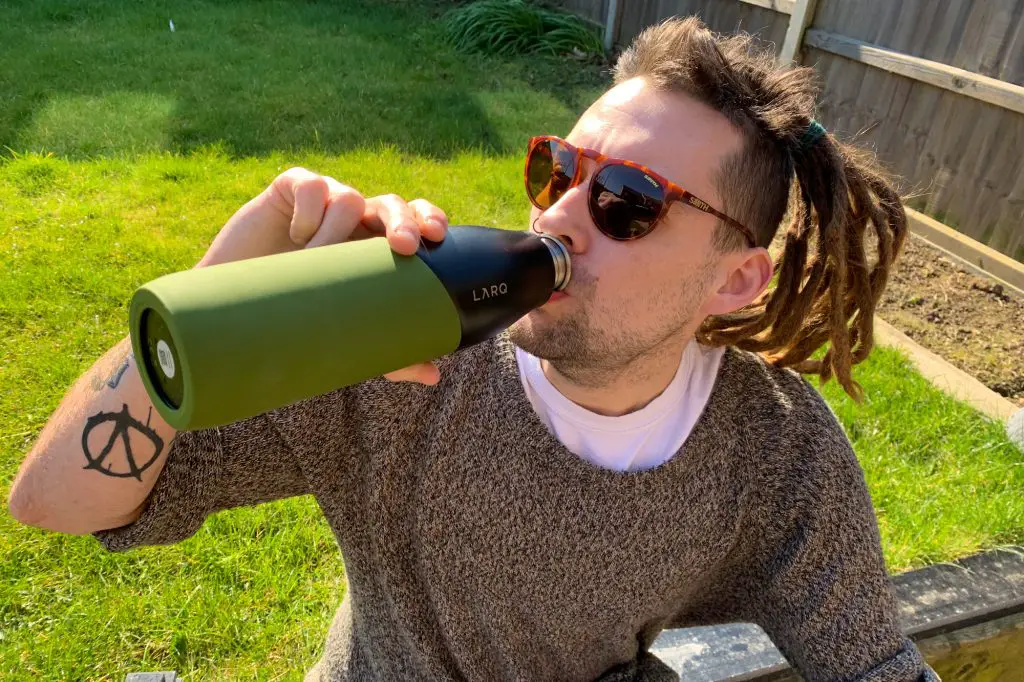
6. Carry Your Own Water
When you are hiking as a couple, it can be very easy to let one person carry the water. However, there is always a chance that you could get separated from each other and fall into difficulty. In that instance, you will be in big trouble if your other half is carrying your entire water supply. Instead, make sure you are both carrying some drinking water.
7. Wear Breathable Clothes
As we’ve already established, sweating is a hiking superpower. Sweating helps us to regulate our body temperature and prevents us from experiencing heat exhaustion. By wearing breathable clothes, you better allow the body to cool itself, meaning that you can hike further, for longer.
If you’re hiking through the rainforest, check out this post about choosing good jungle clothes.
8. Work Out How Long You’re Hiking for
If a litre of fluid for every two hours of hiking is a good goal to aim for, you’ll need to know how long you’ll be on the trail to estimate how much water you’ll need. If your map or guidebook doesn’t give you an estimated hike duration, you can usually work this out yourself.
Simply take the hike distance and divide it by how many kilometres or miles you walk in an hour (an average pace over a long distance will be around two to three miles per hour for most people). This should give you a rough estimate of how long the walk will take. Once you have this estimate, you’ll need to take into account the type of terrain and whether this makes you faster or slower.
9. Drink the Right Fluids
If you are setting off on your hiking adventure first thing in the morning, it can be tempting to bring a coffee for the first part of the journey. However, this is probably the worst thing that you can take on the trail.
Coffee is a mild diuretic which means that it removes water from the body, making you more dehydrated. Undoubtedly, the best thing for hikers to drink is water. However, juice and sports drinks with added electrolytes are all good options as well.
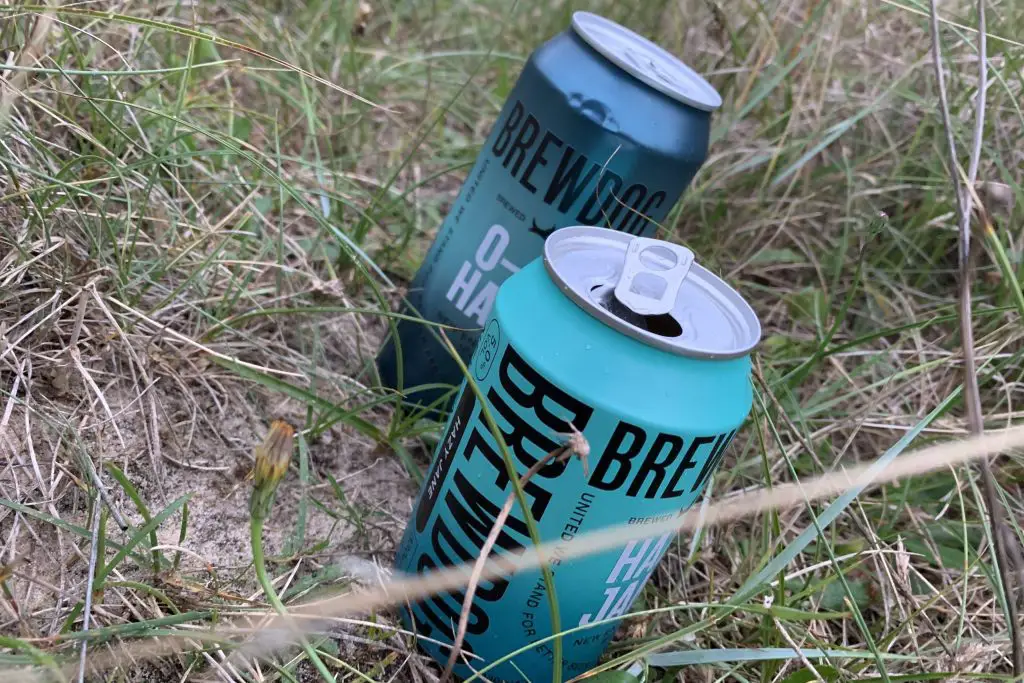
10. Drink Before You Feel Thirsty
This applies not only to hiking life but life in general. Don’t wait until you feel thirsty to drink. Thirst is a symptom of dehydration and at this point, it is already too late. You are far more likely to chug liquids when you’re already dehydrated, making you uncomfortable and desperate for the loo!
11. If in Doubt, Take More
If you’re not sure how much water you need, you should always err on the side of caution. Carrying too much water might be annoying, especially when you already have a heavy backpack, however, the effects of not carrying enough can be serious in remote environments.
If the worst possible thing happens on the trail, you’ll always be grateful that you were carrying more water than you strictly needed.
Dehydration: Symptoms and Treatment
Luckily for hikers, dehydration is easy to spot. If you are dehydrated, you may notice some or all of the following symptoms:
- Headache
- Fatigue
- Tiredness
- Dizziness
- Dry mouth
- Smelly, dark-coloured urine
- Listlessness
- Irritability
- Confusion
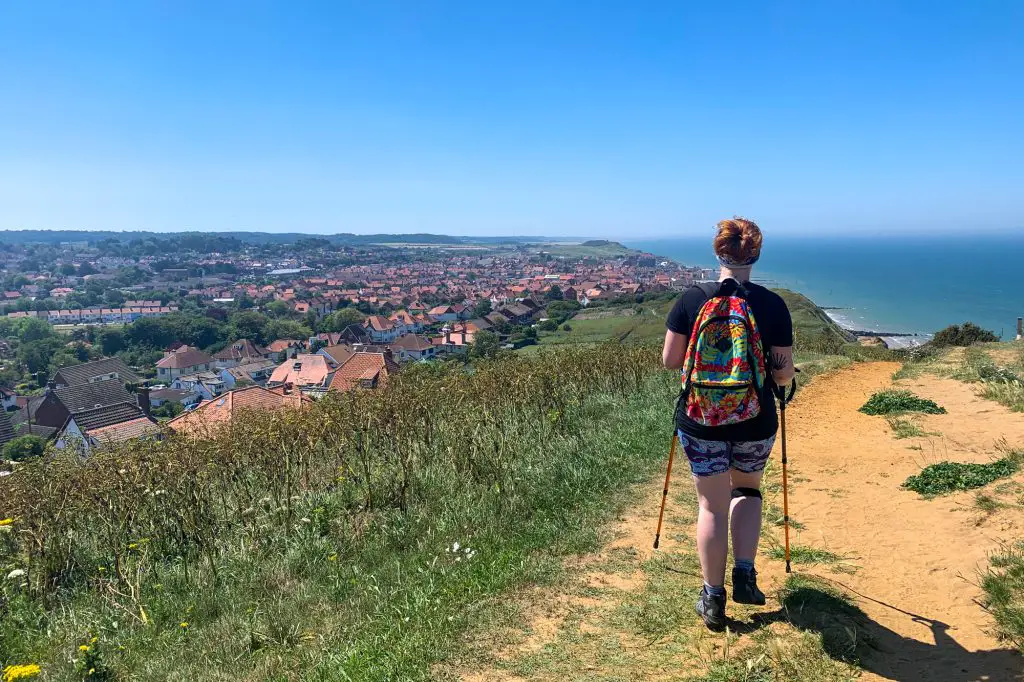
If you are dehydrated, there are a few things that you can do. The first is to stop hiking. If you are in a hot environment, seek respite in a shaded area and allow yourself the time that you need to rest.
While it may be tempting to guzzle down all the water that you are carrying, this may actually be counterproductive. You need to replenish both your fluids and electrolytes so sports drinks are a great choice if you are already dehydrated. If you aren’t carrying a sports drink, pair a salty snack such as pretzels with a drink of water.
Another good tip is to soak your sun hat or t-shirt in water and then put it on. The coolness of the water will help to lower your body temperature, easing the heat effects of dehydration. You should only resume hiking once you are feeling better and the symptoms have subsided.
How Much Water Should You Bring on a Hike? The Verdict!
As a starting point, you should aim to budget around a litre of water across every two hours of hiking. However, it is important to remember that every body is different and you will need to adjust this figure based on your own situation.
If you are somebody who sweats a lot, is doing a particularly strenuous hike or is trekking through a humid environment, you will need more water than the average hiker.
If you can, carry a water filtration system with you and always be careful when deciding how much water to bring on a hike. While carrying too much can be a pain, it is far less risky than carrying less water than you need.

